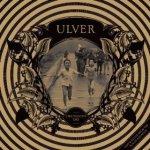Ah, the “cover version”. The staple of musicians needing to fill out an album for contractual reasons. Subject to vicious critiquing by fans of the covered artists. And now, in 2016, damnably hard to arrange licensing thereof. I did an album with three covers, and just finding the company to do it for you is a pain in the ass (the best one went out of business). Apparently there’s industry skullduggery involved; the majors created an agency to manage the process, and now we all basically have to go through that agency, pay a certain amount for a certain number of sales, streams, etc. and then pretend we didn’t put them on our Bandcamp site for sale as well. Well, I was honourable about how I went about it, anyway.
I digress. Now, the term “cover version” is kind of newish. Back in the old days, you were interpreting things, and if you were a professional singer, you didn’t write, you interpreted; Judy Collins’ career was predicated on that. Why, The Byrds used to “interpret” four Dylan songs per album! With the switch to cultural disapproval of singers who didn’t write their own tunes, circa 1969, the “cover version” was born. Why, “covers” started and maintained Bryan Ferry’s solo career, after all. So it can be done well and interestingly.
Most popular acts will release a covers album at some point; they have built up enough of a reputation with their own material, and more importantly, enough of a fanbase, that they can get away with the rather self-indulgent act of releasing an album of other people’s compositions, just for funzies. To show that they can bring out something new in the material that takes it to another place. Done well, it’s interesting and can indeed put a spin on an old, beloved tune. Done badly or by a no-talent, it can be awful and insulting to ears and legacies.
I’m not really a fan of covers albums, but a few have ended up in my collection for various reasons. The selection here pretty well relates to the kind of music and act I usually blog about, but I’m sure there are many more covers albums on my hard drive that I’ve forgotten about. Probably for a reason.
 DANIEL CAVANAGH – Memory & Meaning (2015)
DANIEL CAVANAGH – Memory & Meaning (2015)

Cavanagh is the guitar player/songwriter in Anathema. Readers will remember me blathering on about Anathema many times, so go use the index to find out what they do. But let’s say they are in the Floydian end of smart-guy rock, but they have this sort of emotional edge that their fans appreciate. While Daniel is not the lead singer of his band, he does sing well and play a hell of a guitar. This album was fan-funded and put out in a modest fashion in 2015, and I just recently obtained it. Cavanagh, as you would imagine if you know the band, would be attracted to the languid, spacy end of prog or new wave, and the song selection shows it.
TRACKS: Big Love (Fleetwood Mac), Running Up That Hill (Kate Bush), With or Without You (U2), Song to the Siren (Tim Buckley), How to Disappear Completely (Radiohead), River Man (Nick Drake), Smile Like You Mean It (Killers), Romeo and Juliet (Dire Straits), Wasted Years (Iron Maiden), High Hopes (Pink Floyd)
SONG SELECTION GRADE: A
This guy has great taste. I have removed half a grade — U2? Hmmm. I mean, I like U2 alright, but the world doesn’t need any more homage paid to Bono. Other selections are top-notch, though. Nick Drake (read my article)? You bet! (Cavanagh once recorded a Drake tribute album.) “High Hopes”? A natural choice indeed, and a great song for Cavanagh’s style. “Big Love”? Pretty damn ballsy to do Buckingham, once of the finest finger-style singer-songwriters in the world. And an underrated song too. The Maiden is a nice touch, the Dire Straits tune is one of the best songs ever written, and Tim Buckley is a lifelong fave of mine. It’s probably one of the best covers tracklists I’ve seen all around.
PERFORMANCES/STYLE: A
This is very modest, done acoustically and sparsely, but Cavanagh is good at using a loop pedal (see the band’s recent concert DVD, A Sort of Homecoming), so there are a few extra textures. He’s a good, emotive singer too. The U2 cover is about what you’d expect; sort of true to the original. “Big Love” is done faithfully to the Mac’s The Dance version, but heck, anyone pulling this off has my respect! “Running Up That Hill” is the most interesting rendition, seeing as the original was all synthy; Cavanagh’s acoustic arrangement is heartfelt and moving. “Song to the Siren” appears to be more based on that old dream-pop cover that everyone seems to think is the original. Cavanagh makes good use of a volume pedal on this one. The Drake cover is very pleasant, and the Dire Straits is basically the way everyone does it (with the exception of the shouty Indigo Girls version…). You can’t really go wrong with that one. “Wasted Years” is the other one that benefits well from an acoustic arrangement, being a metal song; the softer vibe brings out something very different in the song. “High Hopes” is, well … “High Hopes”. Good way to end it. While there’s not a ton of variety in the style and the instrumentation, the whole thing is a very pleasing experience.
CONCLUSION: Honestly, this guy just seems likeable; he wanted to pay homage to his influences and did it humbly and with style. The acoustic treatments are classy and the song selection is top-notch. It might not blow your head off, but it’ll sure please you.
 STEVEN WILSON – Cover Version (2014)
STEVEN WILSON – Cover Version (2014)

Wilson is the worshiped leader of the modern prog “movement” or whatever. He’s so popular that he even has female fans as well as male. From Porcupine Tree to No-Man to his solo career, everything he does is quality, mixing his own Gilmour-esque guitar influence with alternative rock, classic prog, ambient and metal, equally adept at all styles, and with a melancholy bent that has the fans a-swoonin’. This album was also released pretty modestly by his standards, and a window into a few of Wilson’s favorite tunes is bound to be interesting; he’s a touch of an iconoclast, hard to pin down. And in true iconoclastic fashion, Cover Version is only half covers; the songs were originally released as six sets of two-song singles, one original and one cover.
So let’s review the originals: they’re quite good. Kind of understated and piano-based on the whole, but at the Floydian end of Wilson’s work. Onward:
TRACKS: Thank U (Alanis Morrisette), Moment I Lost (Steven Wilson), The Day Before You Came (Abba), Please Come Home (Steven Wilson), A Forest (The Cure), Four Trees Down (Steven Wilson), The Guitar Lesson (Momus), The Unquiet Grave (Traditional) Sign O’ the Times (Prince), Well You’re Wrong (Steven Wilson), Lord of the Reedy River (Donovan), An End to End (Steven Wilson)
SONG SELECTION: C+
Steven, I’m Canadian, so I’m allowed to say: BUH?? Alanis? That self-aggrandizing “Thank U” BS is not something we want to be reminded of … thank you. “Thank U” is the grunge hippie chick equivalent of a hip-hop boasting track. There’s no way to make that good, but he does his best. It’s almost not annoying. “A Forest”, on the other hand, is a perfect selection for Wilson, ideal for his overall aesthetic. “The Unquiet Grave” works really well for his vibe as well. Prince…no. No. Donovan is an awesome choice; among all the former hippy icons, Donovan remains surprisingly underappreciated, in my opinion. And this is one of his best compositions.
PERFORMANCES/STYLE: A
Well, we know Wilson is an incredible producer and performer. Things are more stripped down and subtle here than bombastic, but each arrangement is, in typical Wilson style, a little jewel. Abba’s “The Day Before You Came” is made into a very moody little acoustic number, sung with surprising soul. “A Forest” is, as noted, perfect. Without those monotonous drums from the Cure original, it becomes a very effective piece of ambient pop. I’m an expert on British folk (I am!), and modern renditions of British traditional songs in particular. I have VERY strong views on Steeleye Span. “The Unquiet Grave”, which is something of a hoary (and scary) chestnut at this point, is incredible in Wilson’s arrangement, again using soft, ethereal and spooky ambient as the vehicle — it’s like Bass Communion with vocals. A wonderful rendition. Make Your Own Taste does not discuss anything to do with Prince. Finally, “Lord of the Reedy River” is pretty true to the vibe of the original (I’m almost positive I’ve heard Mary Hopkin doing a great version, but I’m not sure that’s correct); the gently jazzy hippy vibe is duly preserved.
CONCLUSION: The originals are great songs, and several of the covers are stunning. But Alanis and Prince are crimes I can hardly forgive. Still, it’s a very good album.
 THE CHURCH – A Box of Birds (1999)
THE CHURCH – A Box of Birds (1999)

An oldie but a goodie. This was slipped out in 1999 to not a ton of notice, though it’s a fave among fans of the Aussie neo-psychers. I’ve been listening to this album for many, many years, not only because it features covers of some of my favorite acts, but because the performances are for the most part awesome, taking these great songs and doing them in that inimitable double-chimy-guitar Church style. Unlike a lot of covers albums, several of the songs are rearranged in attractive new ways. See more about The Church here.
TRACKS: The Faith Healer (Sensational Alex Harvey Band), It’s All Too Much (Beatles), Hiroshima Mon Amour (Ultravox), The Porpoise Song (Monkees), Decadence (Kevin Ayers), The Endless Sea (Iggy Pop), Friction (Television), All the Young Dudes (Mott the Hoople), Silver Machine (Hawkwind), Cortez the Killer (Neil Young)
SONG SELECTION GRADE: A
What’s not to like? One of The Beatles’ most underrated songs, “It’s All Too Much”? The disgustingly overlooked Sensational Alex Harvey Band? Right ON! Hawkwind? OK, I dock half a point because, I mean, “Silver Machine” is done like dinner by everyone. But obscure gems like Kevin Ayers’ “Decadence”, executed in a spooky style, and Iggy Pop’s “The Endless Sea” make up for that. “Porpoise Song” is neat (granted, being from Head, it’s pretty cool for The Monkees). But the piece-a resistance is a killer sped-up take on Ultravox’s usually languid “Hiroshima Mon Amour”. The Church show off their great taste on this album, and I was pleased to find it so close to my own. Mind you, I never did, and still don’t get what’s so great about Television. Sorry.
PERFORMANCES/STYLE: A
As noted, “Hiroshima Mon Amour”, with buzz-saw guitar taking the place of the limpid sax solos, is the highlight, but the rollicking “It’s All Too Much”, with Kilbey doing bizarre things like quoting “Electric Avenue”, is also worth the price of admission. “Silver Machine” is merely ok, as is “All the Young Dudes”. There’s only really one way to do that one. “The Faith Healer” is also pretty true to the original, though Kilbey’s an octave below Alex Harvey. “Cortez the Killer” gives guitarists Willson-Piper and Koppes plenty of psych-shred time, which they’ve always enjoyed. This is a recording on which master musicians show everyone how you interpret a damn song. And Steve Kilbey makes The Monkees sound downright cool on his drawl of “Porpoise Song”.
CONCLUSION: If you want to hear covers done in interesting ways that highlight different aspects of classic songs, then you want to hear this album.
 ULVER – Childhood’s End (2015)
ULVER – Childhood’s End (2015)

Norway’s finest experimental proggers, Ulver, pretty well have to everything ultra-seriously, so of course rather than record a garden variety covers album, Kristoffer Rygg had to make a very focused album of sixties psych chestnuts, some fairly well known and some quite obscure. (Some so obscure that even I haven’t heard of them! Shock! Horror!) It’s an interesting concept that helps show what some of the formative influences have been on Rygg’s post-black-metal musical experimentation.
TRACKS: Bracelets of Fingers (The Pretty Things), Everybody’s Been Burned (The Byrds), The Trap (Bonniwell’s Music Machine), In the Past (We the People), Today (Jefferson Airplane), Can You Travel in the Dark Alone? (Gandalf), I Had Too Much to Dream (Last Night) (The Electric Prunes), Street Song (The 13th Floor Elevators), 66-5-4-3-2-1″ (The Troggs), Dark Is the Bark (The Left Banke), Magic Hollow (The Beau Brummels), Soon There’ll Be Thunder (Common People), Velvet Sunsets (Music Emporium), Lament of the Astral Cowboy (Curt Boettcher), I Can See the Light (The Fleur de Lys), Where Is Yesterday (The United States of America)
SONG SELECTION: A
We gotta give this guy credit for knowing a ton about obscure psych. Anyone with a pretty broad musical knowledge will have come across the tracks by The Pretty Things, The Byrds, Jefferson Airplane, and The Electric Prunes. Some of us even know The United States of America and Beau Brummels. But when you start getting into Bonniwell’s Music Machine and Common People, well, that’s expert egghead level. Of course, someone will write to me and tell me that’s not true, and any psych fan worth his salt should have known about those ones ages ago, blah blah. Blah. Anyway, it’s an impressive collection. The drawback is that there wasn’t a ton of stylistic variation going on back then; they were still pop songs, after all, even if dressed up in backwards tapes and reverb. But it’s interesting.
PERFORMANCES/STYLE: B+
Ulver is a great band. Ulver also sounds like Ulver — dense n’ intense. Rygg has a certain thick, almost disturbingly tranquil nature to his voice that is always there, no matter what. I’ve heard several Ulver albums, so I think that’s fair to say. Hence, the vocal performances, while pleasant, are a bit samey in feel. The instrumentation doesn’t vary a ton from the psych vibes of the originals, though it’s interesting to hear such songs as “Everybody’s Been Burned” and “Today” done with more modern gear and production; it does lend a different feel. Still trippy but less … I dunno, gauzy. More immediate. Ulver’s performances do emphasize the quality the songwriting, that’s for sure. But yeah, Ulver sounds like Ulver.
CONCLUSION: A nice album, though mainly of interest to a) passionate Ulver fans b) passionate sixties psych fans. Not for the general listener, generally speaking.
 DEF LEPPARD – Yeah! (2006)
DEF LEPPARD – Yeah! (2006)

Buh, I hear you say? Well, ok, I’m not exactly a huge fan of the very, very sweetened (sticky, sweet?) stylings of the classiest and most melodic of the pop-metal bands. But I don’t turn it off when it’s on the radio, either, you know what I mean? You can’t argue against the melodic appeal. Anyway, feel the way you want about those trebly Mutt Lange productions, but this album was a surprise. Def Leppard cut their teeth listening to and emulating seventies glam and hard rock, and this is a delightful selection of the best of such songs, performed lovingly and with aplomb. The release was a bit confusing; there were bonus tracks floating around on several different versions (There was some odious Walmart tie-in going on, among others — why make people troll around trying to assemble a full album, guys?). Anyway, the bonus tracks were some of the best ones … Lindisfarne? AMAZING!
TRACKS: 20th Century Boy (T. Rex), Rock On (David Essex), Hanging on the Telephone (The Nerves), Waterloo Sunset (The Kinks), Hell Raiser (Sweet), 10538 Overture (Electric Light Orchestra), Street Life (Roxy Music), Drive-In Saturday (David Bowie), Little Bit of Love (Free), The Golden Age of Rock ‘n’ Roll (Mott the Hoople), No Matter What (Badfinger), He’s Gonna Step on You Again ( John Kongos), Don’t Believe a Word (Thin Lizzy), Stay With Me (Faces) (as noted, there were several bonus tracks out in the ether)
SONG SELECTION: A+
Great stuff all around. You could not ask for a better selection of classic rock songs. Lindisfarne? AMAZING! Too bad it wasn’t on the main album. But there’s some seriously cool shit here… I mean, Lizzy? The BEST. And Roxy Music? Only the coolest band of all time, hands down. Doing Bowie is ho-hum, everyone does him, but the ELO and Badfinger are nice choices as well. As is “Waterloo Sunset”. “Rock On” is a song of dubious quality, but I know it had an effect on kids back in the day. Overall, not a duff track to be found. This is as rockin’ as it gets.
PERFORMANCES/STYLE: A
This is obviously a project done out of love, but it’s also one of Def Leppard’s finest-sounding albums. Okay, it’s their best-sounding. But that’s just me, probably. There aren’t really any drastic rearrangements, but that’s not the point. It’s like you walked into a bar for a quick drink but ended up staying for a couple of hours because the world’s best rock n roll cover band happened to be booked that night, and you just lucked into a wonderful experience. The band rocks and swings hard on all the material without resorting to those signature Lange production touches of theirs such as drums that sound like someone hitting a mic’ed cereal box and the excessive Styx-ian harmonies. This is straight-up rock and roll all around.
CONCLUSION: If you want to hear covers done balls-out, with superb musicianship and enthusiasm, this one’s a winner.



